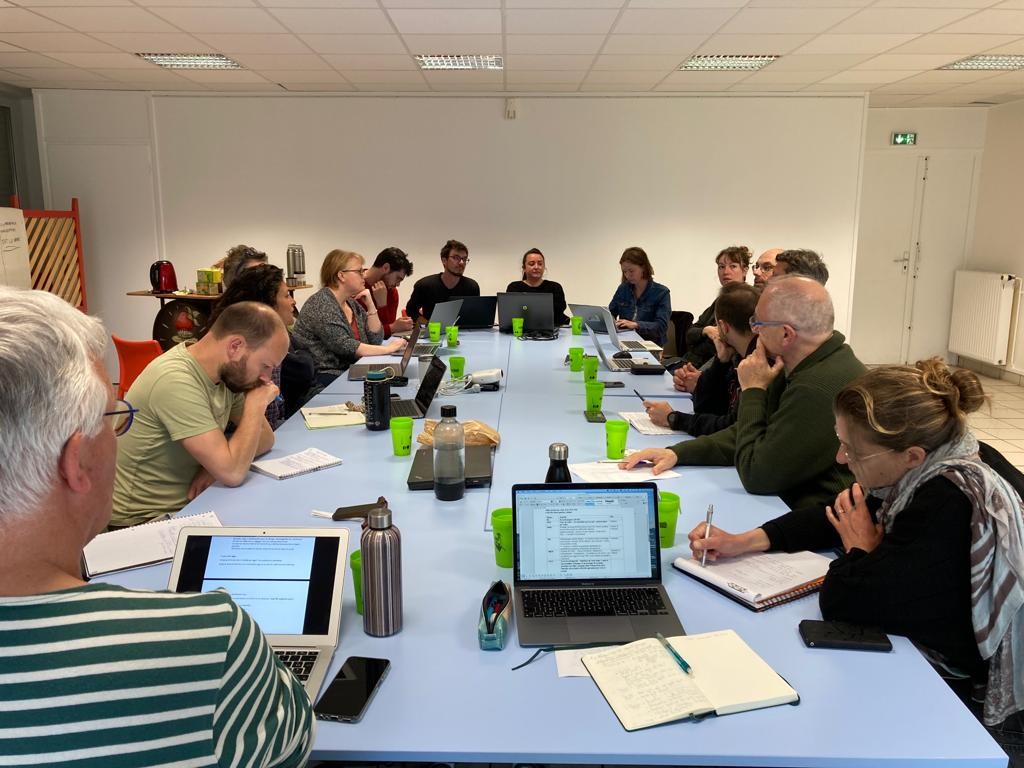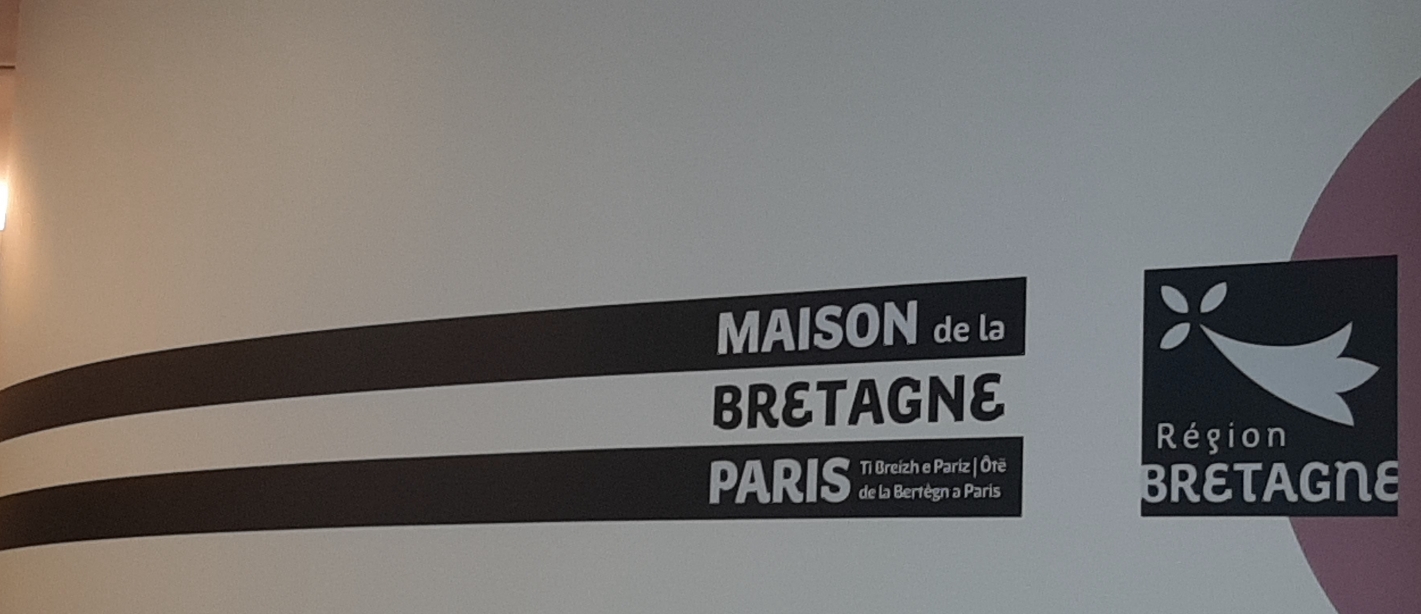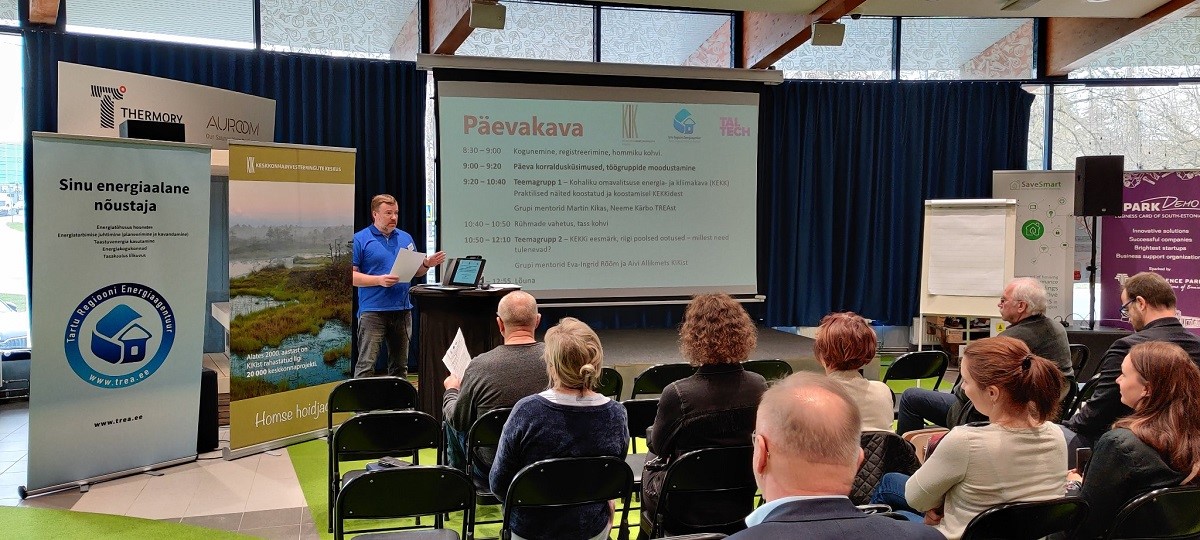
POTEnT says goodbye!
Interreg Europe POTEnT project is coming to an end, but brought longlasting changes in energy transition policies in all the partners’ region.
Through POTEnT, communities will develop or improve energy services that are locally-owned. In this way their transition to a low-carbon economy will be quicker and deeper.
POTEnT (Public Organisation Transform Energy Transition) innovatively addresses a key challenge for European cities and regions: how to achieve more carbon reduction by harnessing the potential of direct and local action by citizens and communities. The need is both great and urgent. The EU is committed by international treaty to achieve ambitious carbon reduction targets.
Regional and local authorities can provide a positive alternative to the market-based provision of energy services. The POTENTIAL lies in their local connections, opportunities and accountability. However, they face many challenges in becoming actors in the energy market. First, they need to develop legal mechanisms, attract investment, acquire skills, engage communities. Second, many market-regulations are made at Member State level, so tailor-made solutions are required.
The project’s objective is to reduce carbon emissions faster than “Business As Usual” through more and better energy services provided by local and regional authorities. 8 partners will:
* analyse partners’ plans through two Thematic Events and eight Mentoring Days,
* identify good practices that will improve these plans, studying them through Study Visits, importing them via special workshops and Regional Action Plans.
* develop/improve public Energy Services Companies (ESCos) and increasing their “market-share”
* build the capacity of all relevant public authorities including ERDF Managing Authorities
* increase investments in low carbon projects, and inspire/empower local decision-makers and communities
The project’s main outputs will be focused on new energy transition solutions through:
* New projects to increase investment in low carbon projects, inspire/empower local decision-makers and communities to achieve higher levels of carbon reduction
* Improved governance by delivering policies to develop/improve public Energy Services Companies and transform existing mechanisms into "future-fit" organisations that will have a bigger impact on carbon reduction.
€2,010,623.00
Low-carbon economy
MAIN FEATURES
The fields of intervention of the ERDF in Brittany focus in particular on the development of renewable energies, with in particular Action 311 of the ROP-Supporting the development of renewable energy production and distribution capacities in Brittany. Priority is given to pilot industrial parks and testing. In the field of methanisation, support is granted within the framework of "industrial" projects, innovative or collective projects or integrated into local energy loops. The conversion of biomass energy is also supported area. The Region wishes to develop the production and storage of renewable energies and intelligent energy systems implemented within the framework of integrated energy management.
WHY IT SHOULD BE IMPROVED
In the field of renewable energies, significant help is given to project investment support, but the organisations that can take these projects to an industrial scale are poorly connected with the territories. The interface needs-achievements must be built in order to allow the emergence of integrated renewable energy development sectors.
The city of Lorient is developing a municipal utility company (ESCo), and POTEnT will help in creating the right conditions for the effective deployment of the desired investments and for the take up of energy ownership initiatives. The arrangements for creating local energy loops, which are for now instruments of cooperation, can also be improved to enable to acquire operational investment capacity
MAIN FEATURES
The objective of the ROP ERDF (Promotion of the low carbon economy in regions and in the production system-Priority axis 4) is to stimulate energy efficiency and savings and the development of renewable sources both by public bodies and enterprises with a view to regional sustainable development both in terms of protecting the environment and cutting energy costs.
The recipients of the policies are public bodies or companies, both through capital grants and through a revolving fund directed to the production system.
The intended results include: reducing the energy consumption of production processes for industrial businesses and public buildings by 20% and increasing businesses’ energy production from renewable resources by 20% and self-consumption by 25%.
WHY IT SHOULD BE IMPROVED
There is a lack of direct policy to directly involve citizens both in terms of reducing consumption (eg residential sector - condominiums or public structures-sports facilities managed by associations) and as regards the production of renewable energy (eg small renewable energy plants built in collaboration with citizens gathered in cooperatives or building solar platforms available to citizens). In addition to identifying these new targets, towards which investment support measures must be adopted, it is necessary to develop new business models, both from a legal, financial and tariff point of view, for shared public/private management, even for already existing small plants.
MAIN FEATURES: The Navarra ROP includes the TO4: Support the transition to a low-carbon economy in all sectors. It only considers the IP 4c: Support for energy efficiency, intelligent management of energy and the use of renewable energy in public infrastructure, including public buildings, and in housing, with a single specific objective on providing Subsidies to improve the buildings’ envelop for their energetic regeneration.
WHY IT SHOULD BE IMPROVED: Navarra has a positive evolution in relation to GHG emissions and Energy Efficiency (EE), and is a reference on renewable energy sources (RES) at national level. Despite these positive aspects, it is difficult to achieve some of the objectives set out in the European 2020 Strategy (specifically the reduction of GHG emissions) and the Region presents one of the highest per capita consumption ratios at the national level. Several strategic strengths such as the RES sector of the region are not specifically defined within the actions listed by the ROP.
What needs to be improved in this context is the connection between citizens and local stakeholders and the energy and climate policies and instruments. Local authorities are key players in the energy sector as they are the level of public authority working more closely with citizens, associations, non profit organizations and SMEs in the energy sector; local energy action plans and projects are a key factor in fulfilling the ROP objectives.
The Energy and Carbon Strategy builds upon the Low Carbon Living Strategy 2010 and Low Carbon Action Plan 2011. It embodies the feedback from MK citizens from the research for the MK2050 Roadmap which was adopted by Cabinet in 2015. The strategy is an overview of how a low carbon environment interacts with other Milton Keynes Council (MKC) policies and citizens to provide energy resilience, reduce carbon emissions, save energy and meet statutory reduction targets. The strategy aims are to:
- Provide energy resilience for the city
- Reduce expenditure on energy for MKC buildings and processes
- Reduce carbon emissions across all sectors (domestic, commercial and transport)
- Engage with all stakeholders to promote the benefits of low carbon lifestyle and behaviour
- Encourage water efficiency.
The policy identifies themes for action and evaluates the potential for these to enable the city to meet it goals, but does not identify specific actions or projects.
POTEnT will identify and evaluate the practicality of key projects in each of the main themes to enable the city to meet the objectives of the Strategy and willl address the concerns of both citizens and commerce to ensure support for the actions. The evaluation of each theme will include the local rationale and financial analysis to enable business models to be developed, ultimately leading to a case for funding each of these. In each case, the potential sources of funding will be identified.
City of Ostrava will improve its own policy instrument - Sustainable Energy and Climate Action Plan of City of Ostrava (SEAP/SECAP, adopted in 2018). This is follow-up policy after Sustainable Energy Action Plan of City of Ostrava adopted in 2014. The main objective of SEAP/SECAP is to reduce CO2 emissions by more than 40 % by 2030 (as compared to the year of 2000) by adopting mitigation and adaptation measures.
The Sustainable Energy and Climate Action Plan of City of Ostrava contains measures to reduce CO2 emissions by the: implementation of energy management and energy-saving measures in public buildings, in sector of other services and in housing sector, modernization of heating systems and boilers, greening of public transport, organizational and economic measures in transport and measures in the new construction.
The strategy also includes energy measures that cannot be performed and fulfilled by the city itself. The aim is to find new approaches to engage all relevant stakeholders – not just public organizations but mainly private sector, which in fact, has the appropriate means to create new opportunities in the field of sustainable production and energy distribution which can contribute to and support the implementation of new market models.
The Regional Development Strategy for Kronoberg County 2015-2025 (RUS) is indicative for the work on sustainable regional development. The actuality of the strategy is tested every four years. The target picture is Gröna (Green) Kronoberg - Open and sustainable habitats with renewal skills.
AIM
The starting point is that RUS is a tool that will help to achieve the goals of regional growth policy by creating better conditions for sustainable regional development, by setting the investment priorities. Coordination between RUS and municipalities overview planning is particularly sought.
OBJECTIVE 2025 (1 out of 6)
Heading towards a PLUS ENERGY county. 80% of total energy use in 2025 in Kronoberg County will be from renewable sources.
OBJECTIVE 2050
Kronoberg County strives to become a PLUS ENERGY county in 2050 The goal is positioning - Kronoberg County will be the greenest region and accelerate development towards a circular economy, where one of the principles is to use renewable energy as well as achieving a positive footprint in terms of resource utilization.
REASON FOR IMPROVEMENT
The policy will be tested every fourth year and renewed every tenth. Input to these revisions is key to improve the strategy. For the Plus Energy target no detailed roadmap exists and the way to reach the goal is unclear. Transnational learnings and capacity building through POTEnT will give input to next version of the RUS and a plan to be a PLUS ENERGY County
MAIN FEATURES
The Operational Programme (OP) for Cohesion Policy Funds is a multifund programme, bringing together investments from the European Regional Development Fund (ERDF), the European Social Fund (ESF) and the Cohesion Fund and aimed at contributing to the delivery of the European Union's strategy for smart, sustainable and inclusive growth and to the achievement of economic, social and territorial cohesion.
In particular:
Priority axis 2.6 Energy Efficiency Investment priority 1: Supporting energy efficiency, smart energy management and renewable energy use in public infrastructure, including in public buildings, and in the housing sector; Specific objective 1: Energy efficient housing sector and street lighting, and increased share of renewable energy in final consumption.
Priority axis 2.9 Sustainable Urban development: supporting sustainable development strategies of five larger urban areas in Estonia, one of them being Tartu
WHY IT SHOULD BE IMPROVED
The Development Plan of Tartu City 2018-2025 bases on OP for Cohesion Policy Funds. Sustainable urban development, technical and user-centred infrastructures can be ensured with smart energy management. As municipalities are looking for tools to develop energy efficiency and most energy providers are privately owned and not motivated to make additional investments in smart energy management. It is important to improve cooperation between stakeholders to develop sustainable energy planning for CO2 emissions reduction
STATE OF PLAY
The company’s Corporate Strategy is a policy that Stadtwerke Ettlingen (SWE) is continuously revising to keep up with the evolving energy market. The company primary objective is to provide its customers with a secure and cost-effective supply of energy and energy services. In addition to these economic objectives, which are geared to competitiveness, SWE as a municipal company also pursues non-material goals, for example:
- improving the IT security and the integration of the blockchain technology
- reduce further the GHG emissions from the energy production, distribution and consumption at the clients’ level, including the city itself
- facilitate the transition towards further increased Low-Carbon Economy.
WHY IT SHOULD BE IMPROVED
The improvement of SWE's own policy instrument is necessary to maintain SWE's competitiveness on the energy market and to remain a central player in the implementation of the Paris Climate Agreement at local level. The integration of digitalisation is the biggest challenge SWE is facing after the liberalisation of the energy market at the beginning of this century. It requires an in depth review and improvement of the corporate strategy.
Digitalisation aims to systematically improve energy use and energy efficiency in the long term. Unused energy efficiency potentials are to be tapped, energy costs reduced and greenhouse gas emissions reduced in order to make a valuable contribution to climate protection.

Interreg Europe POTEnT project is coming to an end, but brought longlasting changes in energy transition policies in all the partners’ region.
The city of Ettlingen in the south-west of Baden-Württemberg is consistently pursuing its path to become climate-neutral by 2040 - in small and in larger steps

The City of Ostrava continues to implement the objectives that were set out in the Regional Action Plan (RAP) of the POTEnT project
Green hydrogen is one of the key strategy of Energikontor Syd RAP

The RAP implementation is going fast in Lorient!

The conference reflected on how interregional cooperation paved the way for energy transition in 8 regions

POTEnT partners will meet on the 20th of April in Paris, France, for the event that will close 4 years of interregional cooperation

As part of the POTEnT regional action plan activities, TREA organised training workshops for local municipalities
The Conference "Role of European territories in the energy transition" will be hosted by POTEnT Lead Partner ALOEN in Paris on the 20th of April 2023.
Parma Approves the Feasibility Study of the first Energy Community in Parma: a great achievement for the implementation of the RAP!!